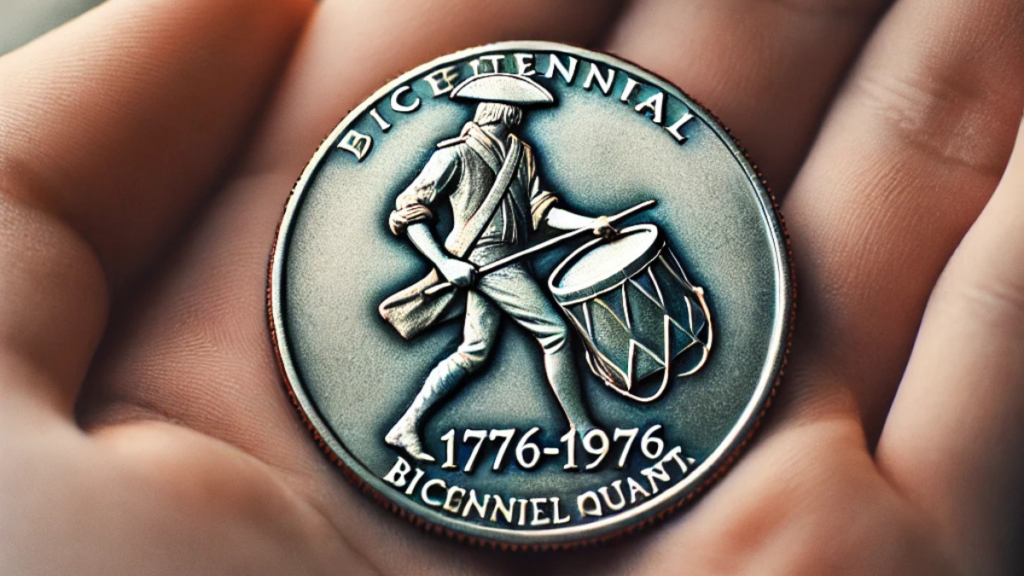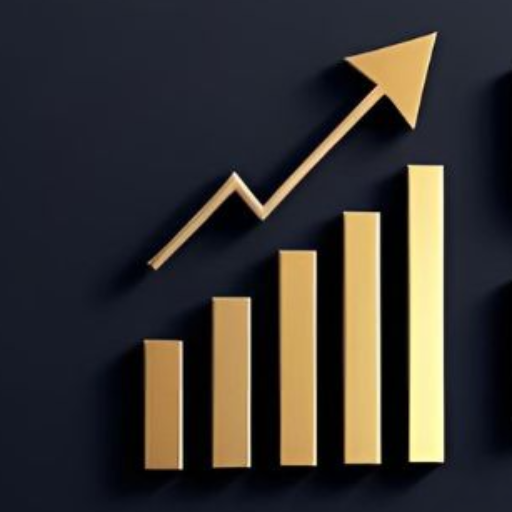The world of numismatics is abuzz with news of some scarce Bicentennial Quarters that may be worth millions of dollars. These special quarters, stamped in 1975 and 1976 to commemorate America’s 200th birthday, have become some of the most coveted treasures among coin collectors.
While the majority of Bicentennial Quarters are only worth 25 cents, eight extremely rare varieties could be worth as much as $2.5 million each and they may still be in circulation in common pocket change. The Bicentennial Quarter, with the colonial drummer boy design by Jack L. Ahr, was made in enormous numbers more than 1.7 billion were struck at three plants.
Yet among this sea of common quarters hide a few extraordinary specimens that could change your life if you’re lucky enough to find one. It’s like searching for a needle in a haystack, but that needle could be worth millions.
What Makes Bicentennial Quarters Special?
Before diving into the rare varieties, it’s important to understand what makes Bicentennial Quarters distinctive in the first place. Unlike standard quarters with an eagle on the reverse, these special coins feature a colonial drummer boy design, symbolizing America’s revolutionary spirit. They also display the dual date “1776-1976” instead of a single year, commemorating the 200th anniversary of American independence.

Struck at three varying U.S. Mint locations Philadelphia (no mint mark), Denver (D mint mark), and San Francisco (S mint mark) these quarters were made in both copper-nickel clad composition for common circulation and a specialty 40% silver composition for collectors.
The Philadelphia Mint had 809,784,016 quarters minted, and Denver had 860,118,839. San Francisco minted much fewer, such as 4 million proof silver coins, 7,059,099 proof clad coins, and 11 million uncirculated silver coins.
What most individuals don’t know is that there are no quarters with the date simply “1975” since the production of the Bicentennial design started in 1975 and continued up to 1976, with all coins having the dual date. This usually creates a misconception among non-collectors who assume they’ve found something valuable when they cannot find a 1975 quarter in their collections.
The 8 Most Valuable Bicentennial Quarter Varieties
1. The 1976 No-S Proof Bicentennial Quarter
The rarest of all Bicentennial Quarters is the 1976 No-S Proof variety. These quarters were minted at the San Francisco Mint in 40% silver but for some reason managed to slip through without the important “S” mint mark that should be found on all San Francisco-minted coins.
As per numismatic specialists, there are merely 15-20 of such error coins available, and thus they are extremely rare. The recent sales have witnessed these coins selling for as much as $180,000, but specialists opine that a flawless example can easily touch $2.5 million in the current market.
To spot this rare treasure, check for:
- The double date “1776-1976”
- Silver content (check the edge for solid silver color without any copper stripe)
- Proof quality with mirror-like fields and frosted design features
- Lack of an “S” mint mark under Washington’s face
2. The 1976 Double Die Obverse Bicentennial Quarter
The second ultra-rare issue is the 1976 Double Die Obverse Bicentennial Quarter. This mis strike happens when the die itself used to strike the coin gets several impressions at slightly varying angles, leaving a visual doubling of design features on the coin’s front side.
With less than 100 examples known, these error coins can fetch high prices. Some have sold for up to $76,375 at auction, with experts estimating perfect ones could reach the $2.5 million level someday.
How to identify this valuable error:
- Search for doubled, obvious lettering and date on the obverse.
- Double-check Washington’s profile for doubling.
- Examine under a magnifying glass for the best look at the doubling.
3. The 1976 Silver Proof Transitional Error
The 1976 Silver Proof Transitional Error is the third multi-million dollar coin variety. The rare error results when a 40% silver planchet designed for proof coins finds its way into regular production and, through accident, gets struck as a circulation coin.
With around 180 documented examples, these transitional error quarters have sold for as much as $35,000, and impeccable examples could be worth considerably more to the appropriate collector.
More Extraordinary Bicentennial Quarter Varieties
4. The 1976 “Pulsar Quasar” Bicentennial Quarter
This uncommonly named type boasts starburst cracks emanating from the center of the coin due to a broken die. With fewer than 200 specimens known, these quarters have been sold for as much as $25,000, with perfect specimens possibly being worth much more.
5. The 1976 “Drum Major” Reverse Clashed Die
This strange mistake forms a ghostly impression of Washington’s profile in the vicinity of the drummer’s head on the back of the coin. There are 350-400 examples known, which have sold as high as $8,000, with higher-grade specimens well worth much higher.
6. The 1976-S Silver MS69 Bicentennial Quarter
Not an error coin, but remarkably rare in near-perfect MS69 condition is the 1976-S Silver Quarter. A specimen sold for $19,200, with experts musing that perfect MS70 specimens might even command seven-figure sums.
7. The 1976 Off-Center Bicentennial Quarter

These theatrical error quarters were struck when the planchet was off-center in the press, which caused a part of the design to be absent. Depending on how far the strike is off-center, these can range in value from thousands to tens of thousands of dollars.
8. The 1976 Wrong Planchet Error Bicentennial Quarter
Perhaps the most elusive of all is the Bicentennial Quarter, minted on a planchet that was meant for another denomination, like a dime or nickel. These mis struck planchet errors are very rare and can fetch prices well into six figures.
| Coin Variant | Key Identifying Features | Estimated Value | Known Specimens |
|---|---|---|---|
| 1976 No-S Proof | Silver composition, no S mint mark, proof finish | Up to $2.5 million | 15-20 |
| 1976 Double Die Obverse | Visible doubling on date and lettering | Up to $2.5 million | Fewer than 100 |
| 1976 Silver Transitional Error | Silver composition in circulation strike | Up to $2.5 million | About 180 |
| 1976 “Pulsar Quasar” | Starburst cracks radiating from center | Up to $2.5 million | Fewer than 200 |
| 1976 “Drum Major” Clashed Die | Washington’s profile visible on reverse | Up to $2.5 million | 350-400 |
| 1976-S Silver MS69 | Near-perfect condition, silver composition | Up to $2.5 million | Extremely rare |
| 1976 Off-Center | Part of design missing, blank area | Up to $2.5 million | Rare |
| 1976 Wrong Planchet Error | Struck on planchet for different denomination | Up to $2.5 million | Extremely rare |
How to Check Your Jar for Valuable Bicentennial Quarters
Now that you know what to search for, here are some handy tips for inspecting your coins:
Tools and Techniques for Identification
First, collect some basic tools that will assist you in determining possibly valuable coins:
- A decent magnifying glass or coin loupe (5x to 10x power)
- Sufficient lighting (natural light is best)
- A digital scale with gram measurements
- A bright light source
- A simple reference guide or coin app
To inspect your Bicentennial Quarters, do the following:
- Verify the date—ensure it reads “1776-1976.”
- Inspect the mint mark (or lack thereof) below Washington’s portrait.
- Look at the edge—a solid silver color without a copper stripe shows silver content.
- Inspect for errors—use your jeweler’s loupe to search for doubling, off-center strikes, or other defects.
- Assess the coin’s weight—a clad quarter should weigh 5.67g, a silver quarter 5.75 g.
Remember, condition is very important to value. Even with a rare type, its value will hinge quite a bit on how well it’s been maintained. Treat any possible treasures gingerly, cradling them by the edges so as not to add fingerprints or scratches.
Read More :- Lincoln Wheat Penny Worth $6.9 Million – Is It Still in Circulation?
Conclusion
While the idea of a $2.5 million Bicentennial Quarter might seem like a numismatic fantasy, the fact remains that some of these coins can be incredibly valuable. The eight varieties we’ve explored represent the pinnacle of Bicentennial Quarter collecting, with potential values that could change your life overnight.
Even if the $2.5 million valuation is more aspirational than realistic for most specimens, these coins can still be worth thousands or even hundreds of thousands of dollars to the right collector. So the next time you’re sorting through your change jar or coin collection, take a moment to examine those Bicentennial Quarters. The colonial drummer boy might just be marching to the tune of millions.
FAQs:-
What mint marks should I look for on these quarters?
Quarters with an “S” mint mark (San Francisco) in silver proof condition are more valuable than regular issues.
Why are Bicentennial Quarters so valuable?
Some rare versions of these quarters have minting errors or unique features, making them highly valuable to collectors.
Where can I get my Bicentennial Quarter appraised?
You can visit a professional coin grading service like PCGS or NGC for authentication and valuation.


